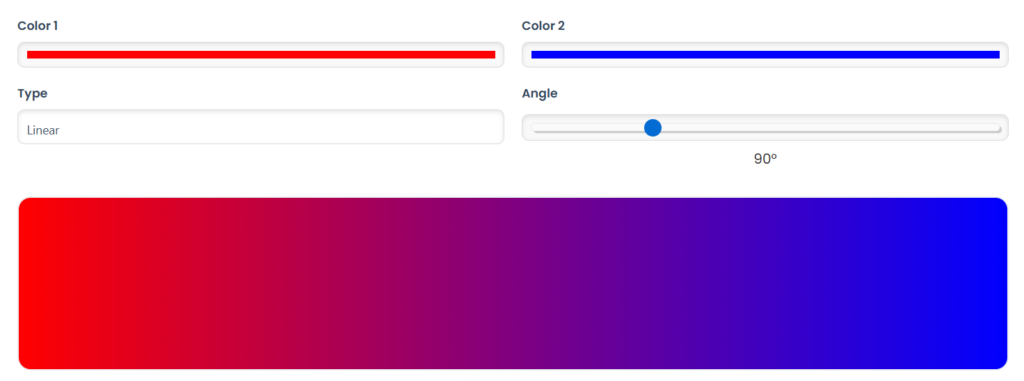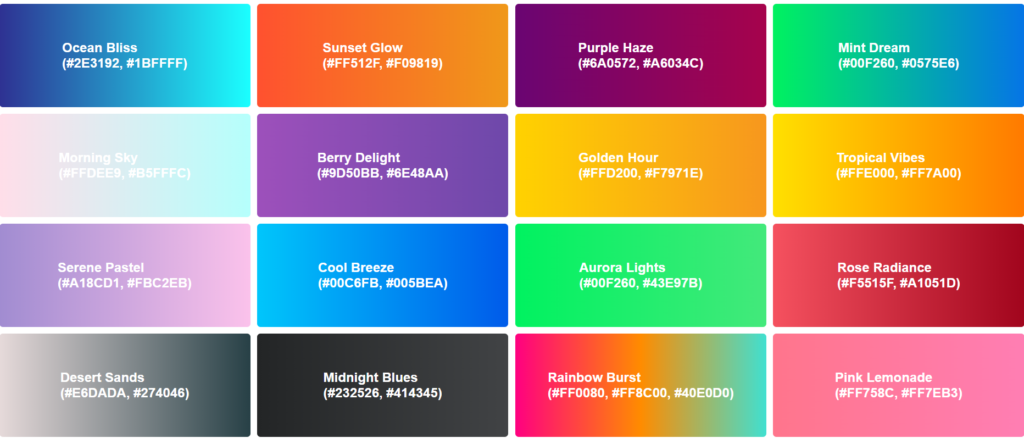The Ultimate Guide to Pink Hex Colors
When it comes to web design, graphic creation, and branding, color plays a pivotal role in defining the aesthetic and emotional tone of a project. Among the many colors available, #FFC0CB pink stands out as a versatile and vibrant choice.
In this guide, we’ll explore everything you need to know about the pink hex color, including its variations, meanings, and practical uses.
Content
What is a Hex Color Code?
A hex color code is a six-character combination of letters and numbers that represents a specific color in the RGB (Red, Green, Blue) color model. It’s widely used in web design to define colors in HTML, CSS, and other coding languages. For example, the hex color code for pink is #FFC0CB.
How Hex Codes Work
- Structure: Each hex code starts with a
#followed by six characters, grouped into three pairs.- Red: The first two characters.
- Green: The next two characters.
- Blue: The final two characters.
- Range: Each pair ranges from
00(minimum intensity) toFF(maximum intensity).
The Meaning and Psychology of Pink
The pink hex color symbolizes love, compassion, and femininity. It’s often associated with calmness, playfulness, and creativity, making it a popular choice for brands targeting a youthful and vibrant audience.
Key Associations
- Light Pink Hex Colors: Gentle, soothing, and romantic.
- Hot Pink Hex Colors: Bold, energetic, and attention-grabbing.
Popular Pink Hex Color Codes
Here are some widely used pink hex color codes along with their RGB and CMYK values:
| Color Name | Hex Code | RGB | CMYK |
|---|---|---|---|
| Pink | #FFC0CB | 255, 192, 203 | 0, 25, 20, 0 |
| Hot Pink | #FF69B4 | 255, 105, 180 | 0, 59, 29, 0 |
| Light Pink | #FFB6C1 | 255, 182, 193 | 0, 29, 24, 0 |
| Deep Pink | #FF1493 | 255, 20, 147 | 0, 92, 42, 0 |
| Pale Pink | #FADADD | 250, 218, 221 | 0, 13, 12, 2 |
Explore more details about the color Pink (#FFC0CB) on HexColor.
How to Use Pink Hex Colors in Design
Pink hex colors can elevate your designs when used effectively. Here are some tips and examples:
1. Web Design
Pink is commonly used in websites targeting fashion, beauty, or lifestyle audiences. For example:
Background Color: Use #FFB6C1 for a soft, inviting background.
Pink Hex Color: #FFB6C1
This is how the color #FFB6C1 looks as a background.
Button Highlights: Apply #FF69B4 for call-to-action buttons.
2. Graphic Design
Pink adds a playful and modern touch to graphics. Combine light and hot pink tones to create contrast and interest.
- Example: Combine
#FFC0CBwith#FF1493for a layered design effect.
Layered Design Effect with #FFC0CB and #FF1493
3. Branding and Logos
Many brands use pink to convey warmth and approachability.
- Example: A cosmetics brand might use
#FFC0CBin its logo to evoke femininity and care.
Logo Preview
Variations of Pink Hex Colors
Light Pink Hex Colors
Light pink tones are soft and subtle, making them ideal for backgrounds and pastel-themed designs. Examples include:
#FADADD: Pale pink with a delicate undertone.
#FADADD – Pale Pink with a Delicate Undertone
#FFB6C1: Light pink with a warm, peachy hue.
#FFB6C1 – Light Pink with a Warm, Peachy Hue
Hot Pink Hex Colors
Hot pinks are vibrant and energetic, perfect for creating bold statements. Examples include:
#FF69B4: A classic hot pink shade.
#FF69B4 – A Classic Hot Pink Shade
#FF1493: A deeper, more saturated hot pink.
#FF1493 – A Deeper, More Saturated Hot Pink
Gradient Ideas
Combine multiple pink hex colors to create stunning gradients:
Soft Gradient: From #FFC0CB to #FADADD.
Soft Gradient: From #FFC0CB to #FADADD
Bold Gradient: From #FF1493 to #FF69B4.
Bold Gradient: From #FF1493 to #FF69B4
Extended Applications of Pink in Design
Industry-Specific Uses
Fashion and Beauty: Pink evokes luxury, style, and femininity. Many high-end brands use shades like #FFC0CB or #FF69B4 for their logos and campaigns.
- Example: A fashion ecommerce store can use
#FFB6C1for their website background to create a chic look.
#FFB6C1 – A Chic Background for Fashion E-Commerce
Food and Beverages: Pink is associated with sweetness and freshness. Shades like #FFC0CB are common in dessert packaging or product promotions.
- Example: A bakery could design their logo using a gradient from
#FFC0CBto#FF69B4to emphasize indulgence.
Bakery Logo
Technology: In tech, pink can signify creativity and modernity, breaking away from conventional colors like blue and gray.
- Example: A tech startup targeting younger audiences might use hot pink, like
#FF69B4, in their app UI.
#FF69B4 – Hot Pink for Modern Tech UI
Historical Evolution of Pink
Pink’s cultural significance has shifted over time:
- 18th Century: Pink was considered a strong and masculine color in Europe, often worn by men.
- 20th Century: By the mid-1900s, pink became more associated with femininity due to targeted marketing campaigns.
- Modern Era: Today, pink is celebrated as a gender-neutral color that’s bold, playful, and versatile.
Tools for Working with Pink Hex Colors
Online Resources
- Colors: Create palettes featuring pink shades.
- Canva: Experiment with pink in templates and designs.
- Adobe Color: Generate harmonious color schemes with pink as the base.
Software Tips
- Photoshop: Use the eyedropper tool to pick hex codes like
#FFC0CBdirectly from images. - Figma: Apply pink hex codes in design elements and test accessibility.
Accessibility and Pink Hex Colors
When using pink in design, ensure it’s accessible to all users:
- Contrast Ratios: Ensure sufficient contrast between pink text and background colors.
- Color-Blind Considerations: Use patterns or labels alongside colors to avoid reliance on visual cues alone.
Example:
If using #FFC0CB as a button color, ensure the text is a dark color like #333333 for readability.
Case Studies: Brands Using Pink
- Barbie: The iconic Barbie brand uses
#FFC0CBto emphasize femininity and nostalgia. - T-Mobile: Their hot pink (
#FF1493) branding stands out in a competitive tech market. - Victoria’s Secret: Combines light and deep pink shades to highlight luxury and allure.
Fun Facts About the Color Pink
- Historical Significance: Pink was once considered a masculine color in the 18th century.
- Cultural Variations: In Japan, pink symbolizes cherry blossoms and represents spring.
- Science of Pink: The human brain perceives pink as a soothing color, reducing aggression and stress.
Conclusion
The pink hex color is a versatile and expressive choice for designers and developers. From light pinks to hot pinks, the wide range of shades ensures there’s a pink for every purpose. By understanding the psychology, variations, and applications of pink hex colors, you can create designs that are both visually appealing and emotionally impactful.
Start experimenting with pink hex codes like #FFC0CB or #FF69B4 in your next project and see how this vibrant color transforms your designs!
With its rich history and countless applications, pink remains a favorite in the design world. Make it your go-to choice for adding warmth, energy, and style to any project.
FAQs on Pink Hex Colors
What is the hex color code for pink?
The hex color code for pink is #FFC0CB. This soft and classic shade of pink is widely used in design and branding.
What are the hex codes for different shades of pink?
Common shades include:
Light Pink: #FFB6C1
Hot Pink: #FF69B4
Deep Pink: #FF1493
Pale Pink: #FADADD
How do I use pink hex colors in web design?
Pink hex colors can be used for backgrounds (#FFB6C1), buttons (#FF69B4), or gradients (linear-gradient(135deg, #FFC0CB, #FF69B4)).
What are popular gradients with pink hex colors?
Examples of gradients include:
Soft Gradient: linear-gradient(135deg, #FFC0CB, #FADADD)
Bold Gradient: linear-gradient(135deg, #FF1493, #FF69B4)
Can pink hex colors be used for accessible web design?
Yes, but ensure sufficient contrast between the pink background (#FFC0CB) and text colors (e.g., #333333) for readability.
What is the difference between hot pink and light pink?
Hot pink (#FF69B4) is a vibrant and bold shade, while light pink (#FFB6C1) is softer and more pastel.


